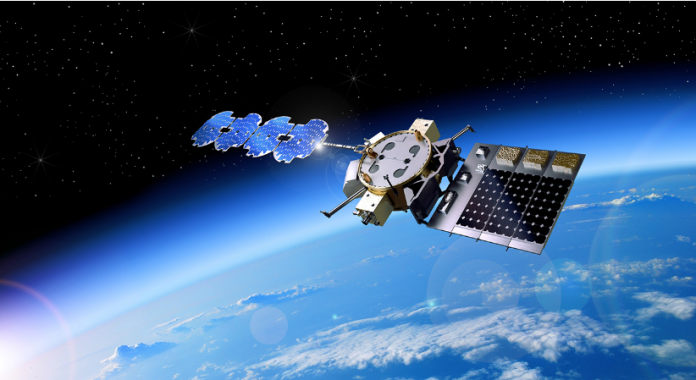The Air Force Research Laboratory’s (AFRL) and Northrop Grumman’s Space Solar Power Incremental Demonstrations and Research (SSPIDR) Project announced that it is one step closer to collecting solar power in space and beaming it to Earth using radio frequency (RF).
In the first end-to-end demonstration of key hardware for the Arachne flight experiment, a team used components for the “sandwich tile” to convert solar energy to RF. Arachne is a flight experiment conducted as part of an AFRL project that aims to develop technologies for a space-based solar transmission system that can power a Forward Operating Base on the ground.
To power a base, solar will be collected by Arachne using high-efficiency solar PV cells that is converted to RF energy using the sandwich tile. The power will be beamed to a receiving station at the base on the ground, and the energy is collected by a rectifying antenna or “rectenna” that will rectify and convert the RF into usable power. The sandwich tiles are key to the process and the design eliminates the need for heavy power banks.
The demonstration of the sandwich tile is one important step in the process. The tiles are comprised of photovoltaics to collect solar energy and RF tiles to emit RF energy, along with electronics that enable solar-to-RF conversion. The sandwich tile has been under development since 2018 as a part of a contract awarded to Northrop Grumman by AFRL.
“The successful conversion of sunlight into RF energy in a lightweight and scalable architecture is a significant step forward in delivering the technology building blocks to achieve the Arachne mission,” said Jay Patel, vice president, remote sensing programs business unit, Northrop Grumman. “We are helping to deliver a pioneering capability that can provide a strategic advantage to our forces around the globe.”
The ground demonstration used a solar simulator to illuminate the PV side of the tile and begin the Solar-to-RF conversion process.
Successful testing of the individual tile for the Arachne payload provides a building block for a square meter panel of tiles – a threshold that has not yet been met by any other solar-to-RF experiments. Arachne is anticipated to launch in 2025.






